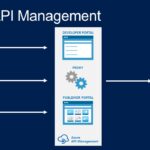In the dynamic world of programming languages, Rust has emerged as a standout contender, driven by increasing global adoption and a promising trajectory. This article delves into the current state of Rust, examining the factors contributing to its rise, the benefits it offers, and the positive outlook it enjoys within the developer community.
Rust’s Ascendancy in Programming
Rust, renowned for its focus on safety, performance, and concurrency, has witnessed a steady rise in popularity. Developers are drawn to its unique features, which blend memory safety and control, making it a reliable choice for building robust and efficient software solutions. This has led to a growing number of projects and companies embracing Rust to power their applications.
Factors Fueling Rust’s Adoption
Several factors contribute to Rust’s increasing global adoption. Its memory safety guarantees mitigate the risk of memory-related bugs, a common source of vulnerabilities in software. Additionally, Rust’s emphasis on zero-cost abstractions empowers developers to write efficient code without compromising performance. These attributes are particularly appealing in sectors where reliability and speed are paramount, such as systems programming and real-time applications.
Building Trust Through Safety
Rust’s key differentiator is its safety-first approach. The ownership and borrowing system prevents common pitfalls like null pointer dereferences and data races, ensuring that developers can write code with confidence. This focus on safety significantly reduces the likelihood of critical bugs and security vulnerabilities, enhancing the reliability of software systems.
Expanding Horizons: From Systems to Web Development
While Rust initially gained traction in systems programming, its versatility has led to its expansion into various domains, including web development. Projects like the Rocket web framework and Actix showcase Rust’s potential for building high-performance, secure, and reliable web applications. This adaptability positions Rust as a language that can cater to a wide spectrum of software development needs.
A Vibrant Ecosystem and Community
Rust’s success is further bolstered by its vibrant ecosystem and engaged community. The language is supported by an array of libraries, tools, and frameworks that simplify development tasks and accelerate project timelines. The Rust community’s commitment to inclusivity, collaboration, and continuous improvement fosters an environment where developers can learn, share, and contribute effectively.
The Positive Outlook for Rust
Looking ahead, Rust’s positive trajectory appears set to continue. As industries recognize the value of software safety and reliability, Rust’s unique features become increasingly relevant. The language’s growing adoption across diverse sectors, from startups to established enterprises, reflects its capacity to address modern development challenges.
Conclusion
The state of Rust is marked by increasing global adoption and a promising outlook within the programming landscape. With its focus on safety, performance, and adaptability, Rust has positioned itself as a compelling choice for developers seeking to create robust, efficient, and secure software solutions. As industries embrace the benefits Rust offers, its impact on the world of programming is likely to grow even further.








